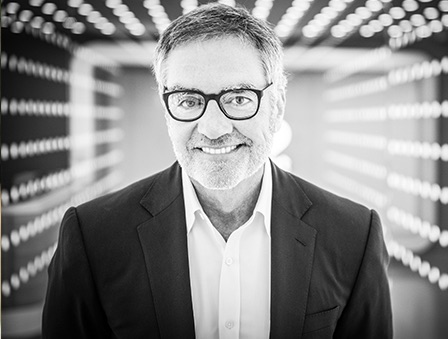Giving Media Consumers What They Need

Bob Pittman, chairman and CEO of iHeartMedia, is the recipient of the Broadcasters Foundation of America’s 2016 Golden Mike Award. The foundation, which offers aid to broadcasters in need, will honor Pittman at its annual gala Feb. 29 at the Plaza Hotel in New York City. Through his career, Pittman has been CEO of MTV Networks, AOL Networks, Six Flags Theme Parks, Quantum Media, Century 21 Real Estate and Time Warner Enterprises. An inductee in the Advertising Hall of Fame and the B&C Hall of Fame, Pittman splits his philanthropic efforts between the poverty-fighting Robin Hood Foundation and New York’s Public Theater. An edited version of Pittman’s conversation with B&C contributing editor Jonathan Kuperberg follows.
What have been the biggest changes at iHeartMedia, and what does the future hold?
What we’ve really done is gone from a radio and outdoor company to a digital company. The other thing is we’ve really begun to act our size. We’re beginning to use that scale in new and exciting ways. iHeartRadio Music Festival is the best known music festival in the U.S.
What is the biggest challenge at iHeart-Media?
The biggest challenge for radio is to tell the story of radio. In terms of reach, impact, relevance to consumer, we’re the biggest mobile medium. What we call mobile, almost 70% of that is consumed in home, 80% of that is over WiFi. Two-thirds of radio is out of home. Consumers listen to radio in the 30 minutes prior to shopping. Radio can impact purchase decisions. The No. 1 problem is getting the facts out. Radio is now the big reach medium.
What’s your favorite music video of all time?
‘Video Killed the Radio Star.’ It turned out not to be true, and it was MTV’s first video.
Broadcasting & Cable Newsletter
The smarter way to stay on top of broadcasting and cable industry. Sign up below
As its founder, how do you think MTV has evolved? What changes should be made?
I would not second-guess anybody. What’s important at MTV is that it constantly changes. I made the decision early on it was going to be the voice of young America. That means we have to change and change and change. After I left, people would say, ‘It was better when you were there.’ My answer was, ‘No, you got old.’ Look how much TV has dropped. For forever, TV was the reach medium. I really didn’t see it coming. What happened was, much of TV is a retailer for programs, and new retailers showed up called Netflix and Apple TV. Suddenly radio was left as the reach medium. Yet most ad buys are built around TV. It’s a period of interesting transition. We have a pretty good seat at the table.
Given your eclectic background, how would you characterize your own connection with broadcasting?
My career has always focused on the consumer. I’ve always been in the consumer-facing business, whether getting people to watch TV at MTV or buy houses at Century 21 or go to theme parks at Six Flags or go online at AOL or listen to their favorite personality and station at iHeartMedia. If the focus is on the consumer and not the process of any industry, that’s the best way to build a company. If you are caught up in running the business based on process or rules of business, you may be left behind by changes in the consumer.
How do you think social media fits and interacts with local broadcast and radio?
When you think about it, TV was built on programs. Radio doesn’t do programs, we do companionship. What we provide to the consumer is what a best friend would provide. And in the old days, that expressed itself by people always calling the request line. They always wanted to talk to us, be on-air. Today, they talk and respond through Facebook, Twitter, Instagram, Snapchat, etc. Social media has turned into the new telephone, the way they communicate. You’d argue TV programs are people’s hobbies. The social chatter turns out to be how you talk about hobbies. We are heavily invested and involved in social. It’s one of the pillars of our company. It’s not an add-on business.
